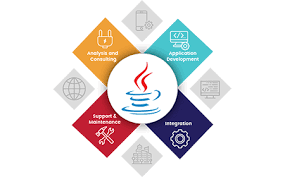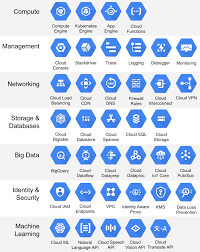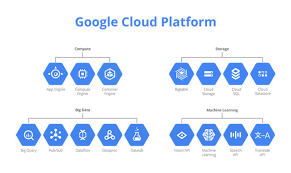Unlocking Business Potential Through Custom Software Application Development
The Importance of Custom Software Application Development
In today’s fast-paced digital world, businesses are constantly seeking ways to streamline their processes, improve efficiency, and stay ahead of the competition. One effective solution that many companies turn to is custom software application development.
What is Custom Software Application Development?
Custom software application development involves creating tailored software solutions to meet the specific needs of a business or organization. Unlike off-the-shelf software, custom applications are designed from scratch to address unique requirements and challenges.
The Benefits of Custom Software Application Development
There are several key benefits to investing in custom software application development:
- Scalability: Custom applications can be easily scaled up or down as your business grows and evolves.
- Increased Efficiency: By automating manual processes and integrating systems, custom software can significantly improve operational efficiency.
- Enhanced Security: Custom applications are built with security in mind, reducing the risk of data breaches and cyber attacks.
- Bespoke Functionality: Tailored features and functionalities ensure that the software aligns perfectly with your business objectives.
- Competitive Advantage: Custom software can give your business a competitive edge by providing unique capabilities that set you apart from competitors.
Choosing the Right Development Partner
When embarking on a custom software application development project, it’s crucial to select the right development partner. Look for a reputable company with a proven track record of delivering high-quality, customized solutions that meet client requirements.
In Conclusion
Custom software application development offers businesses a powerful tool for improving efficiency, driving growth, and achieving strategic objectives. By investing in tailored solutions that address specific needs, organizations can unlock new opportunities for success in today’s digital landscape.
8 Essential Tips for Successful Custom Software Application Development
- Clearly define the project requirements and objectives before starting development.
- Involve stakeholders throughout the development process to ensure their needs are met.
- Use an agile approach to software development for flexibility and adaptability.
- Write clean, maintainable code to facilitate future updates and enhancements.
- Perform thorough testing at each stage of development to catch bugs early on.
- Document the code and processes for easier maintenance and knowledge transfer.
- Consider scalability from the beginning to accommodate future growth and changes.
- Regularly review and refine the project plan to stay on track with timelines and budgets.
Clearly define the project requirements and objectives before starting development.
It is crucial to clearly define the project requirements and objectives before commencing custom software application development. By establishing a solid foundation through detailed documentation and thorough discussions, stakeholders can ensure that the development team understands the scope of the project and the desired outcomes. This clarity helps in avoiding misunderstandings, reducing rework, and ultimately leads to the successful delivery of a tailored software solution that aligns perfectly with the business needs.
Involve stakeholders throughout the development process to ensure their needs are met.
To maximize the effectiveness of custom software application development, it is crucial to involve stakeholders throughout the entire development process. By engaging stakeholders from the initial planning stages to the final implementation, developers can gain valuable insights into the specific needs and requirements of the end-users. This collaborative approach ensures that the resulting software solution aligns closely with the expectations and objectives of all stakeholders, leading to a more successful and impactful outcome.
Use an agile approach to software development for flexibility and adaptability.
Utilizing an agile approach in custom software application development is essential for fostering flexibility and adaptability throughout the project lifecycle. By embracing agile methodologies, teams can respond to changing requirements, incorporate feedback quickly, and deliver incremental updates that align with the client’s evolving needs. This iterative process not only enhances collaboration and transparency but also allows for adjustments to be made efficiently, ensuring that the final product meets expectations effectively.
Write clean, maintainable code to facilitate future updates and enhancements.
To ensure the longevity and flexibility of custom software applications, it is essential to prioritize writing clean and maintainable code. By adhering to best coding practices, developers can simplify the process of making future updates and enhancements. Clean code not only improves readability but also reduces the likelihood of introducing errors during modifications. This approach allows for a more efficient development cycle and better prepares the software for adapting to evolving business needs over time.
Perform thorough testing at each stage of development to catch bugs early on.
Performing thorough testing at each stage of custom software application development is crucial to catch bugs early on and ensure a smooth and successful project execution. By conducting comprehensive testing throughout the development process, developers can identify and address issues promptly, minimizing the risk of costly errors and delays down the line. This proactive approach not only helps in delivering a high-quality end product but also enhances overall efficiency and customer satisfaction.
Document the code and processes for easier maintenance and knowledge transfer.
Documenting the code and processes in custom software application development is essential for ensuring easier maintenance and seamless knowledge transfer within a team or organization. By providing clear and detailed documentation, developers can easily understand the functionality of the code, troubleshoot issues efficiently, and make necessary updates without confusion. Moreover, well-documented code facilitates smoother knowledge transfer between team members, enabling new developers to quickly grasp the project’s intricacies and contribute effectively. Ultimately, thorough documentation plays a vital role in enhancing the long-term sustainability and success of custom software applications.
Consider scalability from the beginning to accommodate future growth and changes.
When embarking on custom software application development, it is essential to consider scalability from the outset to accommodate future growth and changes. By designing the software with scalability in mind, businesses can ensure that their system can expand seamlessly as their operations evolve. This proactive approach not only saves time and resources in the long run but also enables the software to adapt to changing business needs, ultimately supporting sustained growth and innovation.
Regularly review and refine the project plan to stay on track with timelines and budgets.
Regularly reviewing and refining the project plan is a crucial tip in custom software application development to ensure that timelines and budgets are met effectively. By continuously assessing the project plan, teams can identify potential bottlenecks, adjust resources as needed, and address any unforeseen challenges promptly. This proactive approach not only helps in staying on track with project milestones but also allows for better cost management and resource allocation throughout the development process. It promotes transparency, accountability, and ultimately contributes to the successful delivery of a high-quality custom software solution within the specified timeframes and budget constraints.










